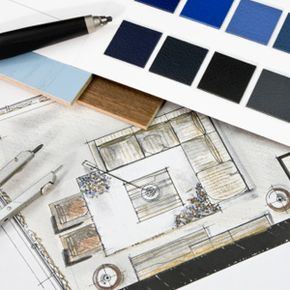Many of us are hopeless when it comes to decorating our homes. We can't decide which furniture to choose, what color scheme to work toward, how to best use the features and rooms in our home. Adding to our décor year after year, we're often left with rooms that we don't enjoy living in, with no cohesive decorating scheme. For help with pulling together the look and design of our living spaces, we turn to professional designers and decorators, who have the skills to transform colors, fabrics and furniture into amazing homes that we're proud to show off to friends and family.
Once you've decided to put things into the hands of a professional, the next step is deciding who to call. While many people use the terms "decorator" and "interior designer" interchangeably, these are actually two very different professions.
Advertisement
To understand whether you need a decorator or a designer, you must first understand a bit about how the building and design process works. Projects can be either residential, which includes single family homes, apartment buildings or multi-family developments, or they can be commercial, including schools, office buildings, stores and everything else. Construction and related companies will generally focus on either residential or commercial work, rarely both. This is because the process, materials and methods between the two types is vastly different.
When it comes to design, most residential work is done by decorators, while most commercial work is done by interior designers. There are many exceptions, of course, but this is a general rule of thumb. Decorators are hired by homeowners, developers or residential architects to help with creating a certain look or feel in the home. Interior designers work hand-in-hand with architects to design the entire interior of a space, from where the walls will go to what kind of flooring material will be used.
Read on to the next section to learn more about the role of the designer versus that of the decorator, as well as how each interacts with architects and clients to complete a project.
Advertisement

